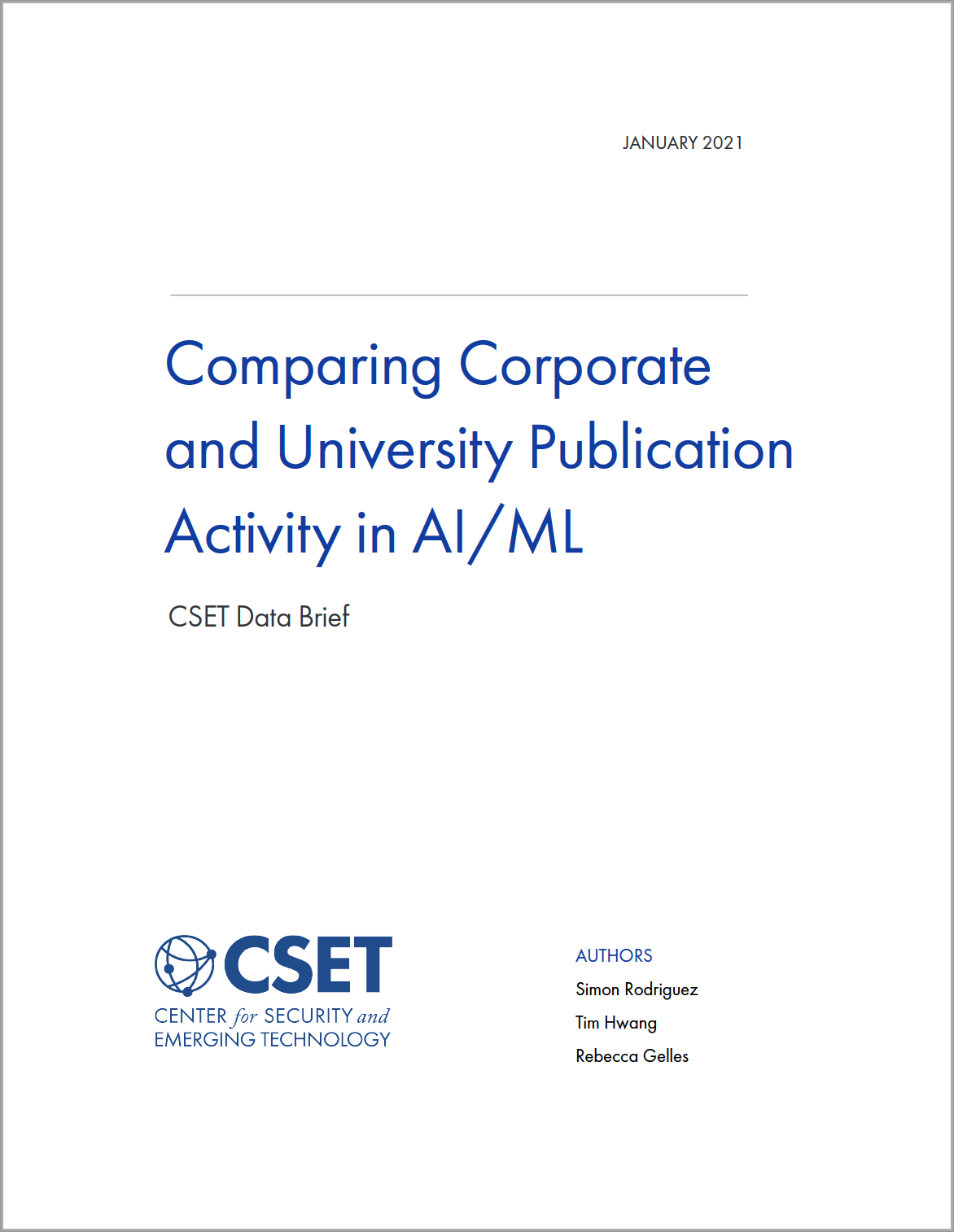Introduction
Corporate labs dominate the public consciousness around artificial intelligence (AI) and machine learning (ML). The widely discussed defeat of world Go champion Lee Sedol by DeepMind’s AlphaGo system in 2016 arguably triggered the contemporary wave of popular coverage and mainstream excitement around the technology. Apple’s Siri and Amazon’s Alexa—both products manufactured by private companies—are two of the most recognizable examples of AI in use today.
This popular focus on corporate activity in ML—particularly of U.S. companies—might lead to the assumption that private labs entirely dominate the ML research relative to the work being conducted in universities. But is this actually the case?
This data brief explores this question by comparing aggregate publication and citation activity among leading U.S. companies and universities publishing research literature on ML.
We find the following:
- Nearly all major corporate labs associated with the AI “revolution” in recent years publish significantly fewer ML papers than universities.
- Despite this, papers produced by corporate labs attract significantly more citations to their research work. But, even here, significant differences exist among the various corporate labs considered to be leading in the technology in terms of publication rates and citations received.
- On a year-to-year basis, the most cited papers in ML do not originate from corporate labs acting alone. Instead, cross-collaborations between companies and university authors tend to be the more frequent source of leading papers in the field for industrial labs. More generally, papers published solely by university authors have constituted a stable majority of the top 100 leading papers in ML by citations since 2010.
Our findings have two important implications for policymakers and strategists thinking about U.S. national competitiveness in AI. For one, narrowly focusing on the widely reported corporate activity in the AI industry may miss important trends taking place elsewhere in the field of ML. Second, policymakers need to consider the distinctions among various leading technology companies as they differ significantly in their level of involvement and impact in the field of ML.
